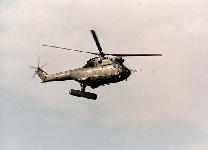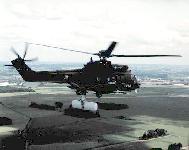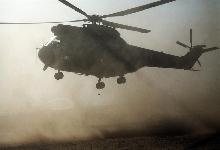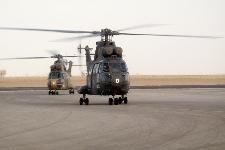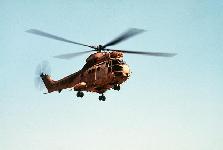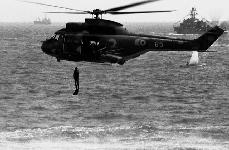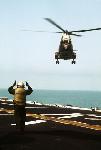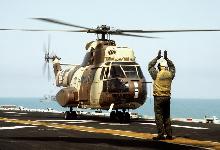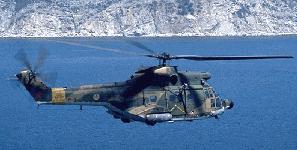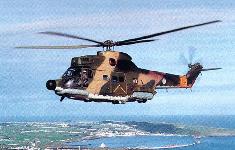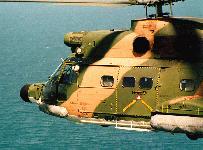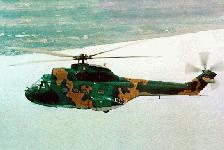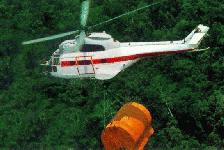FAS |
Military |
DOD 101 |
Systems |
Aircraft |
ROW ||||
Index |
Search |
Join FAS




SA 330 Puma
AS 532 Cougar
The Puma medium lift helicopter was in production until 1987 featuring many roles including military and civilian. Used in the army as a troop carrier it could seat twelve occupants. As a civilian based helicopter the Puma could seat twenty passengers. A total of 696 Puma's had been sold by the end of manufacture although they are still produced in Romania. The Puma was built by the EUROCOPTER Group, owned 70% by AEROSPATIALE France and 30% by Daimler Aerospace (DASA) of Germany.
The Cougar name was adopted for all military variants, and in 1990, all Super Puma designations were changed from AS 332 to AS 532 to distinguish between civil and military variants. The Cougar was designed to provide high performance, ease of deployment, low operating cost, comfort, plus high mission readiness. For military use and adapting to modern battlefield conditions, it features survivability, suitability for tactical flight thanks to exceptional manoeuvrability, low observability, low vulnerability to projectiles, crashworthiness. A multirole helicopter, the Cougar can be armed with machine-guns and pod-mounted cannons, with rockets, or with antisubmarine or antisurface weapon systems to suit different mission requirements. Additional missions include: VIP transport, electronic warfare, and anti-submarine warfare.
The large, four-blade main rotor is mounted above center of fuselage on a hump. Two turboshaft engines are mounted on top of the fuselage midsection, giving the helicopter a humpbacked appearance. The fuselage is long, rectangular, upswept, with a tapered rear section, a rounded, stepped-up, glassed-in cockpit and retractable landing gear. Swept-back and tapered tail fin mounts a rotor on the right and a tapered, single flat on left top of the fin.
The Turbomeca Makila 1A1 turboshafts engines, of modular design and low specific fuel consumption, endows the Cougar with impressive power (2 x 1877 shp). Coupled with exceptionally short response times, contributing to the machine's tactical flight capability. The rotors blades are made of composite materials throughout. By comparison with blades incorporating metallic components, this makes for unsurpassed serviceability, low vulnerability, an unlimited useful life and imperviousness to marine corrosion. Other innovations include a simplified main rotor hub, a main gearbox of modular design and a high-energy-absorption landing-gear contributing to the machine's crashworthiness. The Cougar can also be equipped with jet diluters for protection against heat-seeking missiles, with infrared and electromagnetic countermeasures, crashworthy seats for pilot and military personnel, armorplate for crew seats and vital parts of the machine, a 4.5 metric-ton capacity sling and a winch capable of hoisting 245 kg.VARIANTS
The Cougar name was adopted for all military variants, and in 1990, all Super Puma designations were changed from AS 332 to AS 532 to distinguish between civil and military variants. The �5� denotes military, �A� is armed, �C� is armed-antitank, and �U� is utility. The second letter represents the level of �upgrading�.- SA 330 Puma: Developed in the late 1960s by Aerospatiale in France. Others were built in the UK, Indonesia, Romania.
- AS 532 Cougar Mk I UC/AC is a military version with a short fuselage capable of carrying 21 commandos, which can be fitted with equipment for maximum efficiency in all theaters of operation: radar or missile detector, decoy-launcher. Moreover, its optional equipment make it truly multi-purpose: winch, projector, specific equipment for SAR missions, or, for instance, crashworthy seats, IR camera, NVG compatible cockpit for special missions. The AC version is the armed version and can be equipped with side-mounted machine-guns and axial pods fitted with either 20-mm guns or 68-mm rocket-launchers.
- AS 332 Super Puma: Differs from the SA 330 Puma through an improved rotor system, upgraded engines, stretched fuselage, and a modified nose shape.
- AS-532 Cougar Mk I UE is the basic version with long fuselage of the military Cougar MK1 range. The aircraft can transport 25 commandos in addition to the crew (1 chief of stick + 24 troop seats). For tactical transport and logistical support missions the Cougar UE is offered "ready for use". Its standard configuration includes a minimum of radio (2 VHF/AM,TRANSPONDER, ICS...) and navigation (VOR, ADF, D.M.E., GPS...) equipment performing tasks, military operators normally require.
- AS 532 Cougar Mk I UL/AL is the "long" version which can carry up to 25 commandos or 6 injured passengers lying down and 10 other people. Like the other versions, it is capable of lifting 4.5 tons on a sling. The Horizon battlefield ground surveillance system can be installed on the AS 532 UL.
- AS 532 Cougar Mk I SC is the naval version of the Cougar, and its main missions are the following:
anti-surface unit warface (ASUW) fitted with AM 39 missiles, anti-submarine warfare (ASW) with a variable-depth sonar and torpedoes, and search and rescue and sea patrols.
- AS 532 Cougar Mk II U2 A2 helicopter has the biggest cabin volume in its category : 29 commandos or 12 stretchers with medical equipment, and is capable of carrying 5 tons on the sling. This 1992 version is the longest variant of the Cougar line. It has an improved Spheriflex rotor system with only 4x tail rotor blades, and 2x 2,100-shp Turbomeca Makila 1A2 turboshaft engines that allow an increased cargo carrying capability. It can transport 29 troops or 12 litters, or an external load of 5,000 kg. Primarily used for combat search and rescue, and as an armed version. It may be armed additionally with a 20-mm cannon or pintle-mounted .50 caliber machine guns. Its basic design with screens in the cockpit and a 4-axis autopilot with built-in coupler makes it possible to reduce the crew workload and increase its safety for tactical flight by the same degree.
- AS 535 Cougar Mk II A2 RESCO : The main mission of the A2 RESCO is to recover aircrews downed in combat areasplant (RESCO is the French acronym for Combat Search and Rescue or CSAR). For very long range operations, the CSAR Cougar Mk 2 can operate at a higher alternate gross weight of 11,200 kg compared to its normal maximum mission weight of 9,750 kg. With this enhanced capability, the Cougar can rescue two crew members 400 nautical miles away.
AS 532UL Cougar Mk I UL/Horizon
The Horizon system (Helicoptre d'Observation Radar et d'Investigation sur Zone) consists of the AS 532UL Cougar and a ground station. The Cougar helicopter operates behind the front line at an altitude of up to 4000 meters to survey the battlefield with the Thomson-CSF Target radar. This X-band radar with a swivelling antenna below the rear fuselage has a range resolution of approximately 40 meters and a target velocity accuracy of +/- seven km/h. In snapshot mode the radar can scan 20000 sq km in ten seconds. Horizon is able to survey the movements of up to 4000 wheeled or tracked vehicles at distances of up to 200 km. The French Army procured a total of four helicopters and two ground stations, which were delivered in 1996 and 1997. This represented a major reduction from the original 1980s plan in which 20 aircraft were to be procured uner the Orchid�e program, which was canceled after the first flight of the fully equipped prototype in 1990. Following test missions during the Gulf War, the program was reactivated on a reduced scale in 1993.
Specifications | |
| Country of Origin | France/Germany |
| Builder | EUROCOPTER [AEROSPATIALE & DASA] |
| Role | Armed transport |
| Similar Aircraft | Super Frelon, HH-3E Jolly Green Giant, SH-3 Sea King, CH-53 Sea Stallion, Mi-8 Hip, UH-60 Black Hawk |
| Date of Introduction | 1981 |
| Blades |
Main rotor: 4 Tail rotor: 5, 4 (U2/A2) |
| Rotor Diameter |
Main Rotor : 14 m (Puma) 15.6-16.2 m (U2/A2) Tail Rotor : 3.1-3.2 m (U2/A2) |
| Length |
18.7-19.5 m (U2/A2) (rotors turning) 15.5 m (UC/AC), 16.3 m (UL/AL), 16.8 m (U2/A2) (fuselage) |
| Height | 4.6 m |
| Width | 3.6-3.8 m (U2/A2) |
| Cargo Compartment |
Floor Length: 6.5 m (AC/UC), 6.8 m (UL/AL), 7.9 m (U2/A2) Width: 1.8 m Height: 1.5 |
| Weight |
Maximum Gross: 9,000 kg (Mk I), 9,750 kg (Mk II) Normal Takeoff: 8,600 kg (Mk I), 9,300 kg (Mk II) Empty: 4,330 kg (UC/AC), 4,460 kg (UL/AL), 4,760 kg (U2/A2) |
| Standard Payload |
Internal load: 3,000 kg External on sling only: 4,500 kg Transports 20-29 troops or 6-12 litters (variant dependant), or cargo. |
| Engine | 2x 1,877-shp Turbomeca Makila 1A1 turboshaft |
| Maximum speed | 275 km/h (Mk I), 325 km/h (Mk II) |
| Cruising speed | 249-270 km/h |
| Range | 769 km-416 n.m. 800 km-432 n.m AS 532 UL/AL Normal Load: 620 km (UC/AC), 840 km (UL/AL), 800 km (U2/A2) With Aux Fuel: 1,017 km (UC/AC), 1, 245 km (UL/AL), 1,176 km (U2/A2) |
| Fuel |
Internal: 1,497 liters (UC/AC), 2,000 liters (UL/AL), 2,020 liters (U2/A2) Internal Aux Tank: 475 liters ea. (4x Mk I, 5xMk II) |
| Service Ceiling | 4,100 m |
| Hover |
out of ground effect: 1,650 m (Mk I), 1,900 m (Mk II) in ground effect: 2,800 m (Mk I), 2,540 m (Mk II) |
| Vertical Climb Rate | 7 m/s |
| Armament |
|
| Survivability/Countermeasures | Main and tail rotor blades electrically deiced. A radar warning receiver is standard, while a laser warning receiver, missile launch detector, missile approach detector, infrared jammer, decoy launcher, and flare/chaff dispensers are optionally available. |
| Special equipment | Armour plates for the cargo, PLS (Personal Locator System), GPS (Global Positioning System), chaff/flare dispensers, RWR (radar warning receiver), MWS (Missile approach warning system) |
| AVIONICS | The aircraft is NVG compatible, and through its instruments, avionics, full autopilot, and nav computer, is capable of operation in day, night, and instrument meteorological conditions. |
| Crew | 2 (pilots) |
| Cost | |
| User Countries | At least 38 countries : Algeria, Argentina, Belgium, Brazil, Chad, Chile, China, Djibouti, Ecuador, France, Gabon, Germany, Iceland, Indonesia, Iraq, Ivory Coast, Jordan, Kenya, Kuwait, Lebanon, Libya, Malawi, Mexico, Morocco, Nepal, Nigeria, Oman, Pakistan, Panama, Philippines, Portugal, Senegal, Singapore, South Africa, Spain, Sudan, Switzerland, Togo, United Arab Emirates, UK, Zaire |
Puma / Cougar Mk I UC/AC
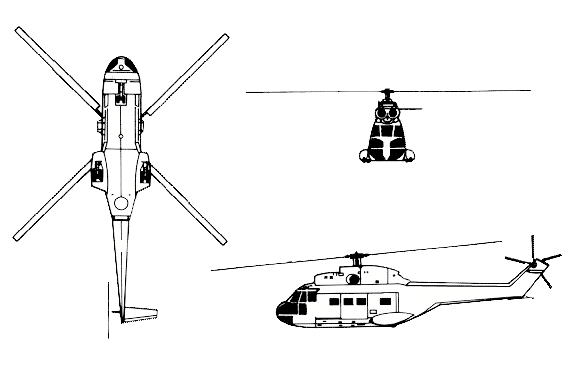
Super Puma / Cougar

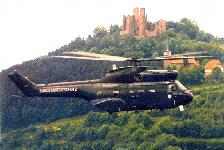
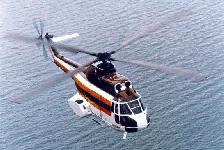
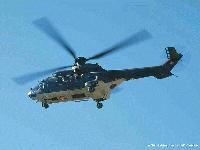
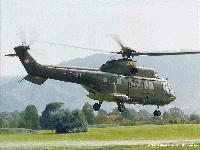
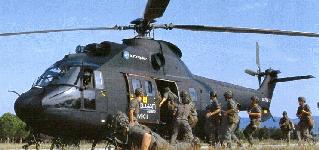
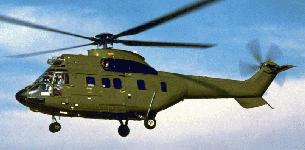
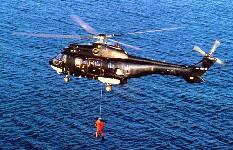
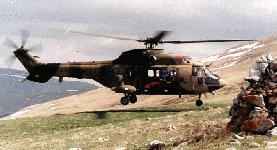
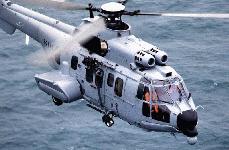
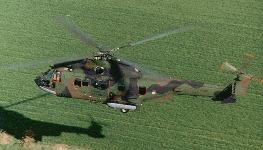
Sources and Resources
FAS |
Military |
DOD 101 |
Systems |
Aircraft |
ROW ||||
Index |
Search |
Join FAS
http://www.fas.org/man/dod-101/sys/ac/row/cougar.htm
Maintained by Robert Sherman
Originally created by John Pike
Updated Monday, June 26, 2000 2:05:40 PM
